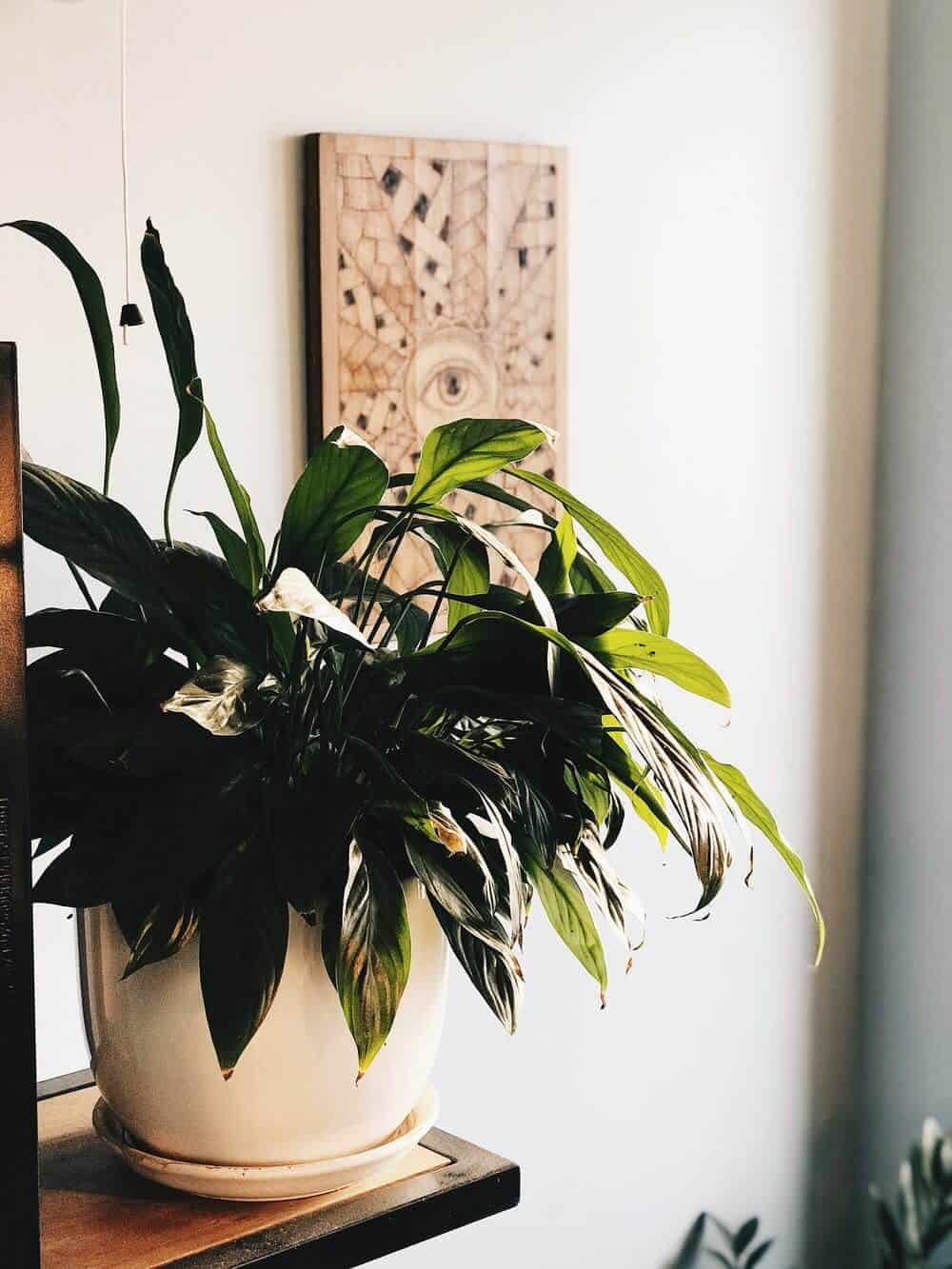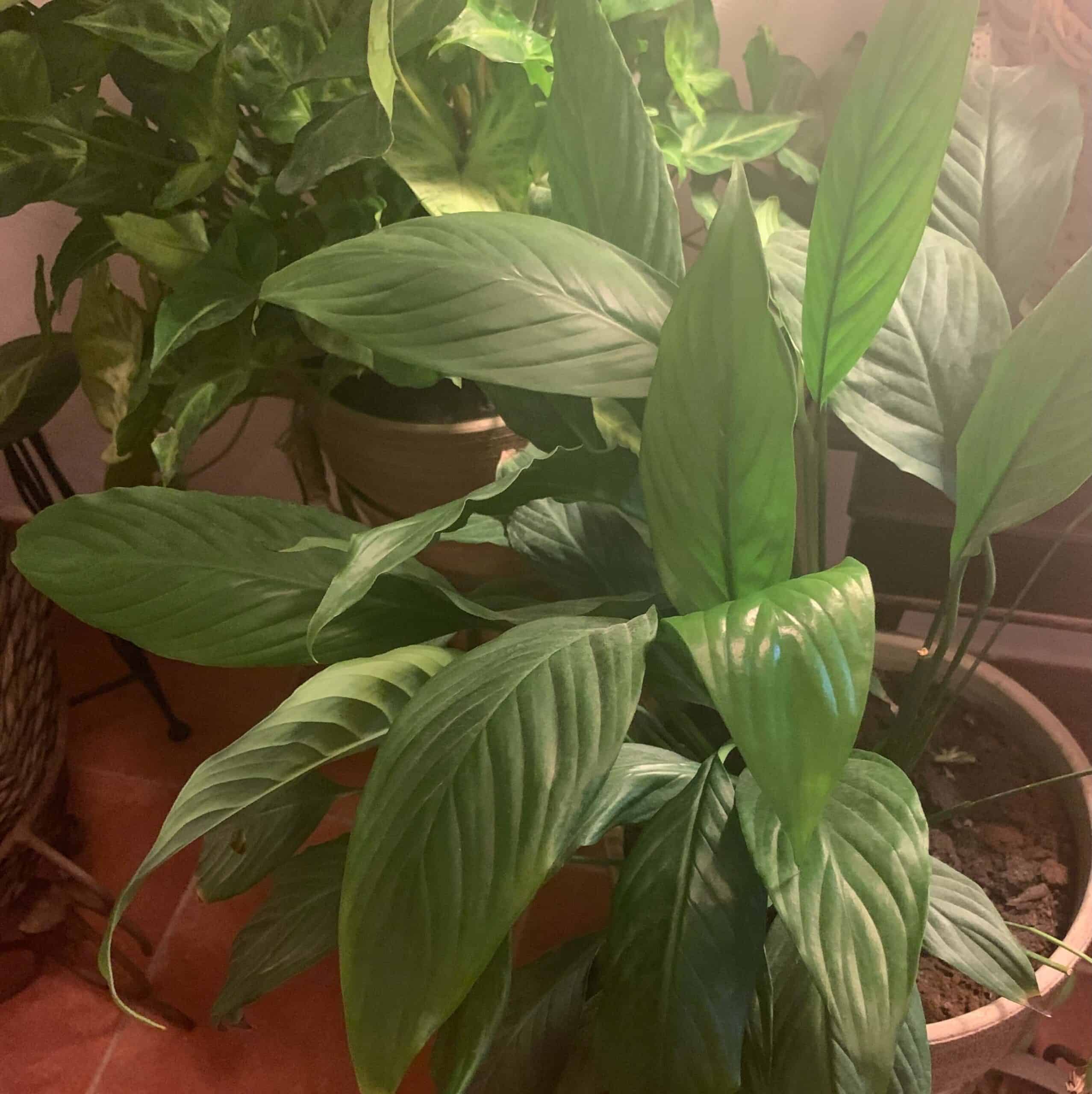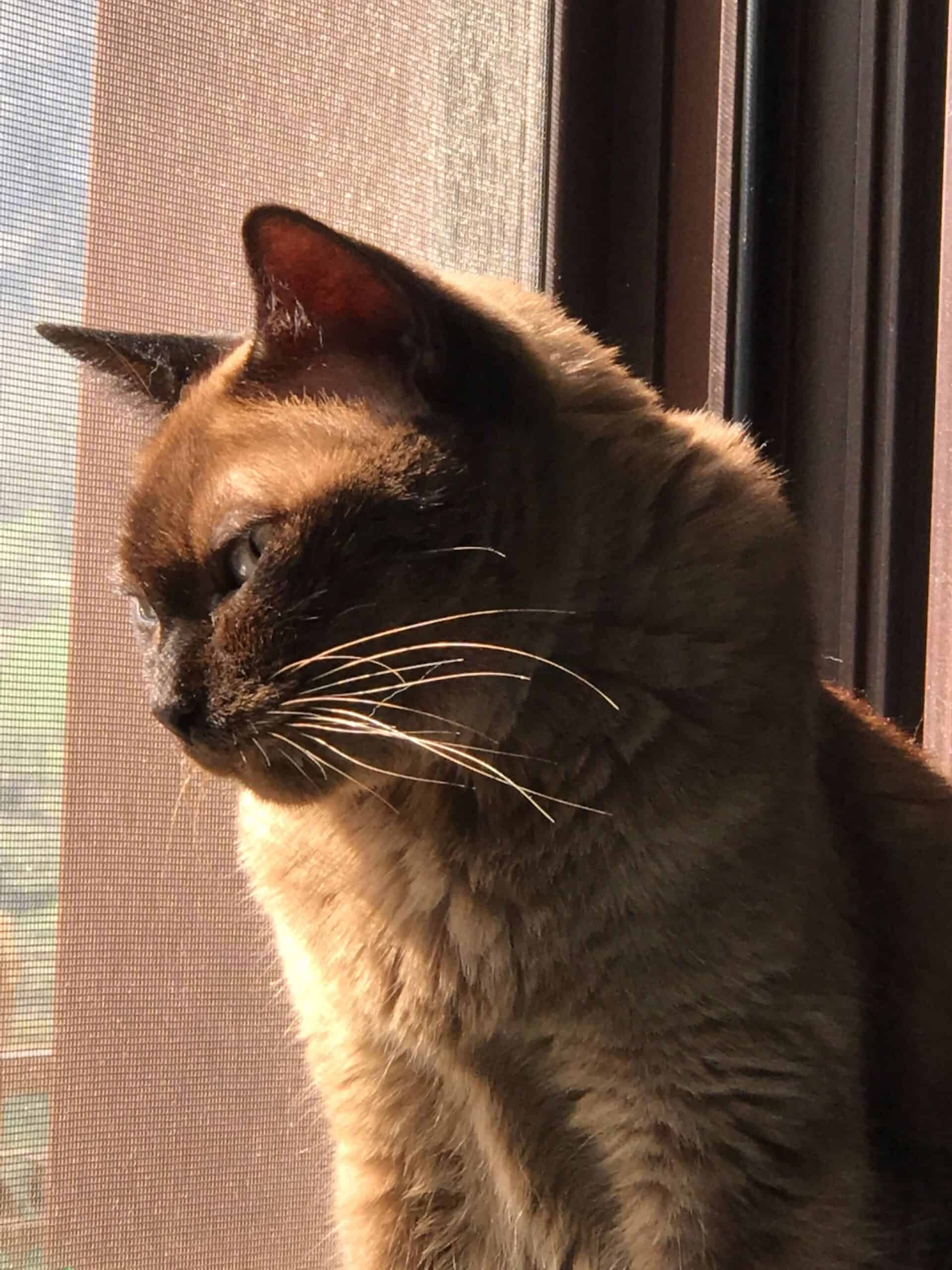Last Updated on January 16, 2023 by a Friendly Gardener
For home gardeners that love beautiful flowers, the peace lily or spathiphyllum is a lovely house plant that requires very little maintenance and will brighten up your home with its pretty white flowers. While not a true lily as it is a member of the Araceae family, it bears some resemblance to lilies explaining its popular name. The white flower it produces looks very similar to a calla lily with a white sheath or spathe similar to a hood.
Peace lilies come in all sizes and are often used as floor plants where their wide leaves and potential growth height can find sufficient space. These plants can reach a desirable three feet in height, so if you’re looking for a potentially tall plant to dress up a shady corner, the peace lily might be a nice choice. For the environmentally sensitive, this plant also helps to cleanse the air. Even Nasa included the peace lily on its Top Ten Household Air Cleaning Plants list.

About the Peace Lily
This perennial plant calls American rainforests home and as we mentioned can grow from 35 to 50 inches for a large version or in the standard version to approximately 24 to 40 inches. The peace lily will blossom in the springtime with beautiful leaves or “bracts” but if it is well cared for, it may blossom again in the autumn. The flower blooms will last for about two months and then a period without blooms will follow.

The great thing about these plants is that they do very well in rooms that don’t offer a great amount of light. So, if you are looking for a houseplant that flowers for your office or bedroom or any corner of your home that doesn’t offer direct light, no worry, the peace lily will brighten any space.
True or False? Poisonous for Pets?
The American Society for the Prevention of Cruelty to Animals, unfortunately, does list the peace lily as one of the most poisonous plants for house cats. This plant contains oxalates that will cause profuse salivation in both cats and dogs because it is an irritant for both the mouth and the digestive system. However, since there will be a reaction as soon as the animal takes its first bite, most animals will avoid the second bite thus limiting any serious damage.

If you have house cats, you may want to avoid the peace lily altogether or you can place them where they are not easily accessible to your cats. However, if you really love the peace lily and your cat, place a cat deterrent in your plant pot such as coffee grounds or even a small puncture-holed bag or box with mothballs on the inside.
Likewise, the peace lily is toxic for pet dogs if they ingest it. Good obedience training will help Fido understand that your peace lily is off-limits. Again, place your plant where it is not accessible to your dog. Should your dog show any signs or symptoms of oxalate poisoning such as an irritated mouth or heavy salivation, get to your vet immediately. Most dogs, like cats, will avoid the second bite.

Peace Lily Plant Care
Your peace lily, like all house plants, will need a certain amount of light and water to ensure its health. Peace lilies thrive in indoor temperatures between 65° and 85° Fahrenheit. They do not do well in temperatures that fall under 45 degrees, so if you work in a colder climate region and your office space isn’t heated, check that out before placing a peace lily there especially overnight when the heating may be turned off. They also do not tolerate cold drafts, so a place near an opening and closing door in a colder climate is not recommended. Likewise, they should not be placed near heaters or air conditioning units.
Good peace lily care will guarantee that your plant thrives and lasts for a long time. These houseplants prefer shade and not direct light. They tolerate fluorescent lighting well and can thrive in a space without windows. If Peace lily yellow leaves develop, you’ll know it has been receiving too much light and any brown streaks or leaves will indicate that it has been burnt or scorched by direct sunlight. Brown leaves at the bottom of the plant might just be overwhelmed by newer younger leaves that are sprouting.
Watering your plants properly
If you’re not good at watering plants, either because you give too much or because you forget to water, know that a peace lily will depend on you. How often do you need to water a Peace lily? A basic rule would be once a week in order to keep your soil moist. You may need to water less in the winter and perhaps a bit more in the summer. During the growing season in summer, you can spray the plant’s leaves with a fine mist of distilled water to give your plant some extra TLC.
Sagging or Peace lily drooping will tell you that your plant needs water. If you have completely forgotten to water your peace lily, and the leaves look as if they have fainted and lie completely flat, not to worry, water your plant and it will revive. A final thought about water relates to chlorine content. If your city’s water is highly chlorinated, you can counter the negative effect chlorine has on peace lilies by setting out a bowl of water overnight before giving the water to your plant. This will allow the chlorine to percolate away before watering.

Peace lilies have good resistance to diseases and pests. They may be somewhat subject to invasions of aphids, spider mites, or mealybugs, however, you can try wiping their leaves regularly or a plant insecticide spray. Peace lily brown tips on leaves indicate any number of things with the most common being:
- Too much water
- Too much fertilizer
- A lack of humidity, aridness.
Peace lily flower turning green is often due to aging blooms, and you can prune them off if you desire to do so. Another cause of peace lily flowers turning green is excess fertilizer, low light as well as acclimation.
The bottom line
As an easy-care plant that does not require direct sunlight but cleanses the air we breathe, the peace lily is a fantastic choice for any home or office space. This resilient house plant is an easy maintenance plant because it revives quickly if it remains for several days without sufficient water, it does well with minimal light, and it boasts a stronger immunity to insects than other house plants. If you want a beautiful low-maintenance blooming plant to dress up your home or office space, the peace lily is certainly worth your consideration.

